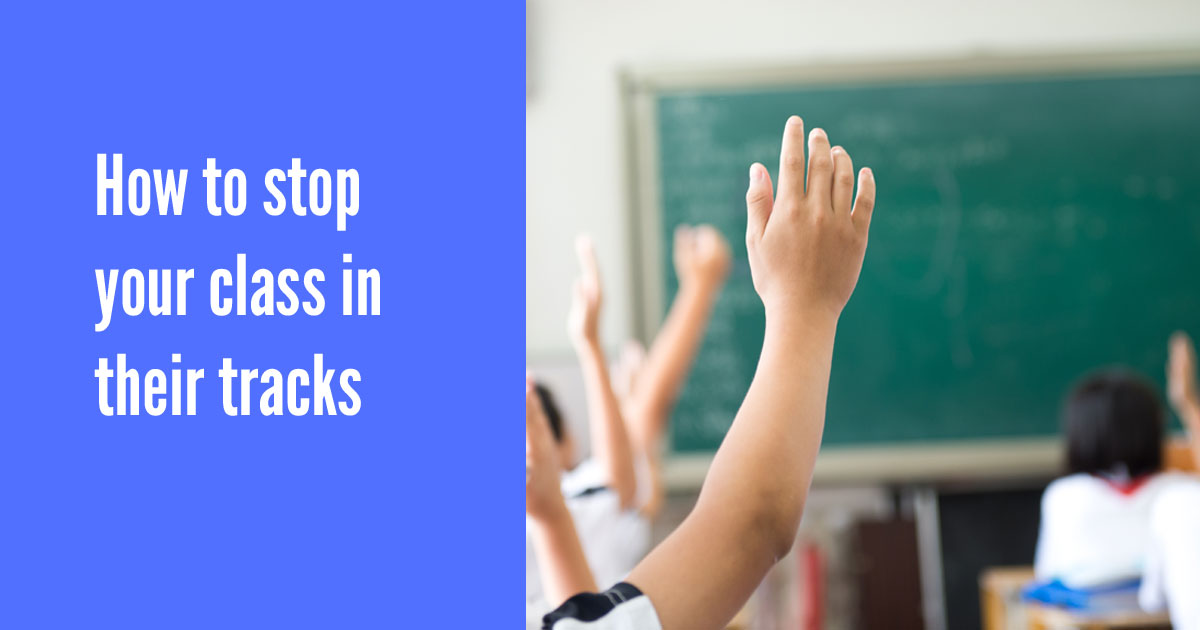Getting your whole class to stop and listen is a crucial part of keeping order and conveying information.
However, getting everyone to stop quickly can sometimes be easier said than done. Waiting around for children to stop is boring and resentment can rapidly build as valuable learning time is wasted.
When a class is slow to stop, it also significantly decreases the amount of pace you are able to inject into a lesson.
So – what do you about classes that find it difficult to come together as a group? Here is our guide to stopping your class in their tracks.
Why do they do that?
Some pupils have realised that NOT stopping when everyone else does, gains them a lot of attention. This can feel very powerful.
We know that some pupils need more attention than others and some would rather receive negative attention (i.e. being told off) than no attention at all.
Those students quickly work out this nifty trick to draw all eyes to them; deliberately carry on with what you are doing when the teacher has asked everyone to stop.
Remember: ANY reaction at all, is giving attention. That includes sighing, frowning, looking, tense body language, telling off, using the pupil’s name, asking others to ignore them etc.
Starve unwanted behaviours by withdrawing attention completely and remaining neutral.
What can you do about it?
Here are key tips for getting your class to stop when you want them to:
- Don’t stop the class too often; make sure that when they stop, it’s for an important piece of information, delivered animatedly. Keep it short and sweet, otherwise it becomes irritating to keep being interrupted.
- Use a clear stop signal (not your voice). Musical instruments are popular. As are chants where the class replies. e.g. Teacher: ‘One, two three…’ Class: ‘Eyes on me!’
- Follow up with immediate praise, attention and recognition for those who HAVE stopped straight away.
- Resist the temptation to stare or wait out anyone who is deliberately not following instructions. Instead, make a statement such as ‘We’re moving on now.’ This lets pupils know that you won’t let the learning be held up.
- Use a visual signal such as a gesture or an image on the board to back up your stop command.
- Make stopping fun!

